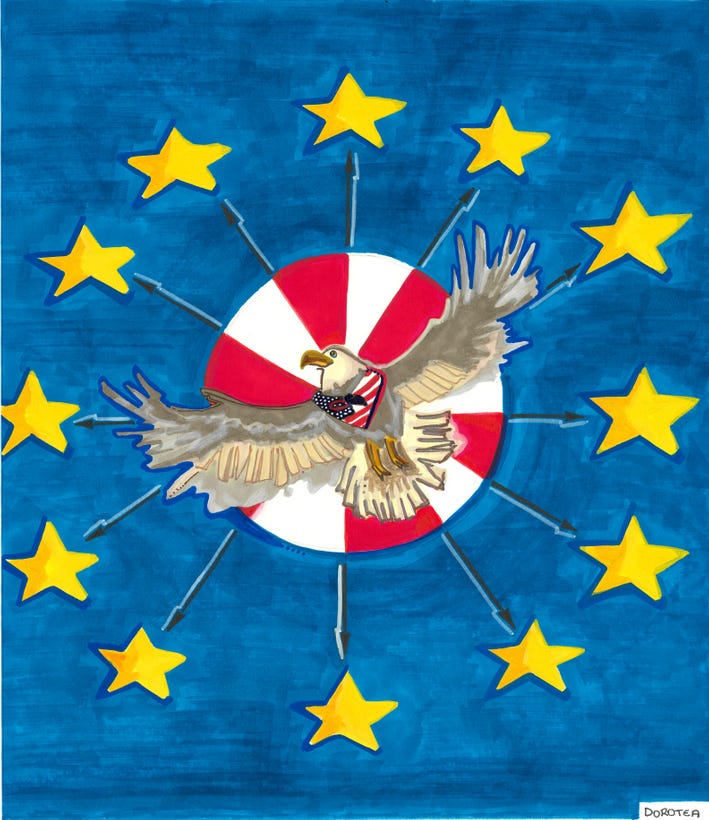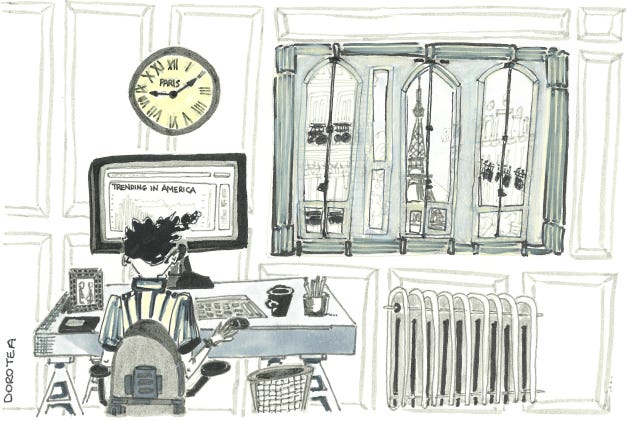Not to brag, but my last essay on here did rather well. Going viral on Substack is much nicer than doing so on short-form media, but my pleasure is tempered by the confirmation of something that I have suspected from the beginning: As with so many things, the surest way to succeed here – perhaps the only way – is to reach an American audience.
I published the viral essay two weeks ago, on Friday morning. By the end of the day it had reached 600 views – a little above average for the first day, and where most of my essays tend to stop. But when I woke up on Saturday, it had nearly 3,000 views, with new comments and subscribers flowing in every few minutes.
Clearly some influential readers had shared my essay during the American day, prompting a spike in views. But what happened next was more revealing: Engagement continued to climb after America went to bed, reaching a large audience in Europe and the UK. Two weeks on, the essay has more than 13,000 views and has gained me 200 subscribers. Almost all of this activity came from within the Substack ecosystem.
I’m guessing there were two factors at play here. First, because of the monoculture,1 American accounts are followed by people all over the world; some of those that shared my essay had global reach. Second, the size of the American market means that the essay probably crossed an engagement threshold there, prompting the algorithm to start recommending it to users worldwide.
There’s a long history of creative people moving to America to tap into the world’s biggest market – particularly Brits, who share the language and who can affect the Oxbridgey cleverness that liberal Americans seem to find so alluring.2 For various reasons, this path has never interested me.
But what I observed points to an even starker imbalance. My aim is to reach readers across Europe, but my most successful attempt went through America first. To achieve enough momentum to crack the European market, my essay needed a spin in the American flywheel.
Hub and spokes
This pattern is repeated across the economy. The EU’s vaunted ‘Single Market’ is nothing of the sort: It may have eliminated tariffs but all manner of regulatory hurdles remain, making cross-border trade within the bloc prohibitively expensive for young or low-margin businesses.3
The market for digital services is no less fragmented. Scaling across Europe means offering everything in 24 languages4 and doing 27 rounds of compliance, plus dealing with EU regulations that get more bloated every year. Businesses in America only have one official language and one set of national laws to worry about.
This is the paradox at the heart of our economy. Scaling across Europe requires an enormous administrative capacity, but an enormous administrative capacity can only be paid for by continent-scale operations. Legacy companies can balance the books, but newcomers can’t break out of their national market.
For a new company to conquer Europe it must therefore first get big on another continent, which usually means America. Europe has plenty of e-commerce platforms and streaming services but they’re bound by national borders. Amazon and Netflix spread into every market because they arrived from the American flywheel.5
Their services have improved our lives in many ways, but when everything in Europe from dating apps to international news media was built by and for Americans, the result is cultural colonisation.
We don’t lack ambitious people with creative ideas; we lack the regulatory streamlining and unified capital markets for businesses to scale up. Luckily for European founders, digital businesses are relatively mobile, so anyone who hopes to become a pan-European sensation can first go to America and fill their war chest for the regulatory battles to come.
If and when they return home, they will no longer be fully European – and nor will the companies that they built, whose services we consume. We will be living in an American market, and no amount of regulation can prevent it.
I have written here about how people all over the world have absorbed American culture and political discourse due to its dominance in all forms of media.
Consider John Oliver, who enjoyed only moderate success as a comedian in the UK before shooting to superstardom in New York on The Daily Show.
The Economist recently wrote here about how a Spanish paint-maker would need to design a different tin to sell in France because of conflicting requirements on recycling labelling.



